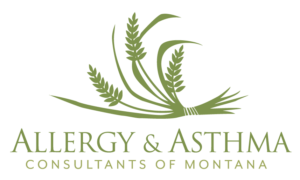WHAT ARE ALLERGIES?
One of the marvels of the human body is that it can defend itself against harmful invaders such as viruses or bacteria. But sometimes the defenses are too aggressive, and harmless substances such as food, drugs or pollen are mistakenly identified as dangerous. These triggers are called “allergens.” The immune system then rallies a defensive response, launching a host of complex chemicals to attack and destroy the supposed enemy. In the process, some unpleasant and, in extreme cases, life-threatening symptoms may be experienced by the allergy-prone individual. These allergic reactions may occur anywhere in the body, but usually happen in the skin, eyes, lining of the stomach, nose, sinuses, throat and lungs – places where the immune system normally fights off invaders that are inhaled, swallowed, or come in contact with the skin.



WHAT ARE COMMON ALLERGIES?
Pollen and animal dander allergies: The pollens from trees, grasses and weeds are a major source of allergies, along with animal dander. Allergic Rhinitis, also known as “hay fever,” is a term that describes the symptoms including runny nose, itching, sneezing and stuffy nose due to blockage or congestion. Diagnostic testing can be done to identify which pollens or animals are causing your symptoms, and your allergist can develop a treatment plan for your individual condition. Some of the most common pollen allergies in Montana are: Mountain Cedar, Sagebrush (mugwort), Kentucky Bluegrass, and Timothy Grass.
Food allergies: While an estimated 40 – 50 million Americans have allergies, only 1 – 2% of all adults are allergic to foods or food additives. Food allergies are more common in children. The most common food allergies are to milk, peanuts, soy, eggs, and wheat.
Stinging insect allergies: Most people are not allergic to insect stings and should know the difference between an allergic reaction and a normal reaction. More than 500,000 people enter hospital emergency rooms every year suffering from insect stings. A severe allergic reaction known as anaphylaxis occurs in 0.5% – 5% of the U.S. population as a result of insect stings. At least 40 deaths per year result from insect sting anaphylaxis. Simple testing can be done to determine if you are allergic to insect stings, and excellent treatment is available.
WHAT ARE THE CAUSES OF ALLERGIC REACTIONS?
There are hundreds of ordinary substances that can trigger allergic reactions. Among the most common are plant pollens, molds, household dust (dust mites), animal dander, foods, medicines, feathers and insect stings. These triggers are called “allergens.” An allergic reaction may occur anywhere in the body, but usually appears in the skin, eyes, lining of the stomach, nose, sinuses, throat and lungs – places where special immune system cells are stationed to fight off invaders that are inhaled, swallowed or come in contact with the skin.
ARE ALLERGIES INHERITED?
The mechanism for inherited allergies is not yet well understood. We do know that the stronger the family history of allergy, the more likely it will be that other family members will be allergic.
WHO DEVELOPS ALLERGIES?
Allergies can affect anyone, regardless of age, gender, race or socioeconomic factors. While it is true that allergies develop more commonly in children, they can occur for the first time at any age or, in some cases, recur after many years of remission. Although the exact genetic factors are not yet understood, allergies can run in families. Factors such as hormones, stress, smoke, perfume or other environmental irritants may also play a role.
DO PEOPLE OUTGROW ALLERGIES?
Allergies or asthma, especially in children, may eventually become more easily controlled, or may even seem to be “outgrown.” This may take years, however, so that treatment may be necessary for prolonged periods.
CAN ALLERGIES BE TREATED?
Our office specializes in the treatment of allergies and asthma. Though allergies can not be "cured," our office can put together a treatment plan that can lessen symptoms. Some treatment options to consider are: avoidance strategies, oral antihistamine regimen, allergy injections, and sublingual immunotherapy.

